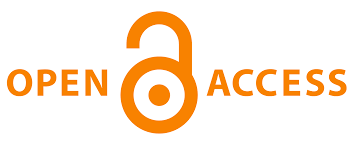DOES INFLATION TARGETING WORK IN EMERGING COUNTRIES? AN EXAMPLE OF GEORGIA
DOI:
https://doi.org/10.35945/gb.2020.10.021Keywords:
Monetary Policy, Monetary Policy Rate, Inflation, Inflation TargetingAbstract
Monetary policy is the macroeconomic policy that allows central banks to influence the economy. It involves managing the money supply and interest rates to address macroeconomic challenges such as inflation, consumption, growth and liquidity. Historically, for a long time, the task of monetary policy was limited to controlling the exchange rate, which in turn was fixed (at the beginning of the 20th century on the gold standard) for the purposes of promoting international trade. Eventually such a policy contributed to the Great Depression of the 1930s. After the depression, governments prioritized employment. The central banks have changed their direction based on the relationship between unemployment and inflation, known as the Phillips curve. They believed in the link between unemployment and inflation stability, which is why they decided to use monetary policy (putting money into the economy) to increase total demand and maintain low unemployment. However, this was a misguided decision that led to stagflation in the 1970s and the addition of an oil embargo in 1973. Inflation rose from 5.5% to 12.2% in 1970-1979 and peaked in 1979 at 13.3%. Over the past few decades, central banks have developed a new management technique called "inflation targeting" to control the growth of the overall price index. As part of this practice, central banks are publicizing targeted inflation rate and then, through monetary policy instruments, mainly by changing monetary policy interest rates, trying to bring factual inflation closer to the target. Given that the interest rate and the inflation rate are moving in opposite directions, the measures that the central bank should take by increasing or decreasing the interest rate are becoming more obvious and transparent. One of the biggest advantages of the inflation targeting regime is its transparency and ease of communication with the public, as the pre-determined targets allows the National Bank's main goal to be precisely defined and form expectations on of monetary policy decisions.
Since 2009, the monetary policy of the National Bank of Georgia has been inflation targeting. The inflation target is determined by the National Bank of Georgia and further approved by the Parliament. Since, 2018- 3% is medium term inflation target of National Bank of Georgia.
The inflation targeting regime also has its challenges, the bigger these challenges are in developing countries. There are studies that prove that in some emerging countries, the inflation targeting regime does not work and other monetary policy regimes are more efficient.
It should be noted that there are several studies on monetary policy and transmission mechanisms in Georgia. Researches made so far around the topic are based on early period data. Monetary policy in the current form with inflation targeting regime started in 2009 and in 2010 monetary policy instruments (refinancing loans, instruments) were introduced accordingly, there are no studies which cover in full the monetary policy rate, monetary policy instruments and their practical usage, path through effect on inflation and economy. It was important to analyze the current monetary policy, its effectiveness, to determine the impact of transmission mechanisms on the small open economy and business development.
The study, conducted on 8 variables using VAR model, identified both significant and weak correlations of the variables outside and within the politics like GDP, inflation, refinancing rate, M3, exchange rate USD/GEL, exchange rate USD/TR and dummy factor, allowing to conclude, that through monetary policy channels and through the tools of the National Bank of Georgia, it is possible to have both direct and indirect (through inflation control) effects on both, economic development and price stability.
Downloads
Downloads
Published
Issue
Section
License
Copyright (c) 2020 Globalization and Business

This work is licensed under a Creative Commons Attribution-NonCommercial-ShareAlike 4.0 International License.









